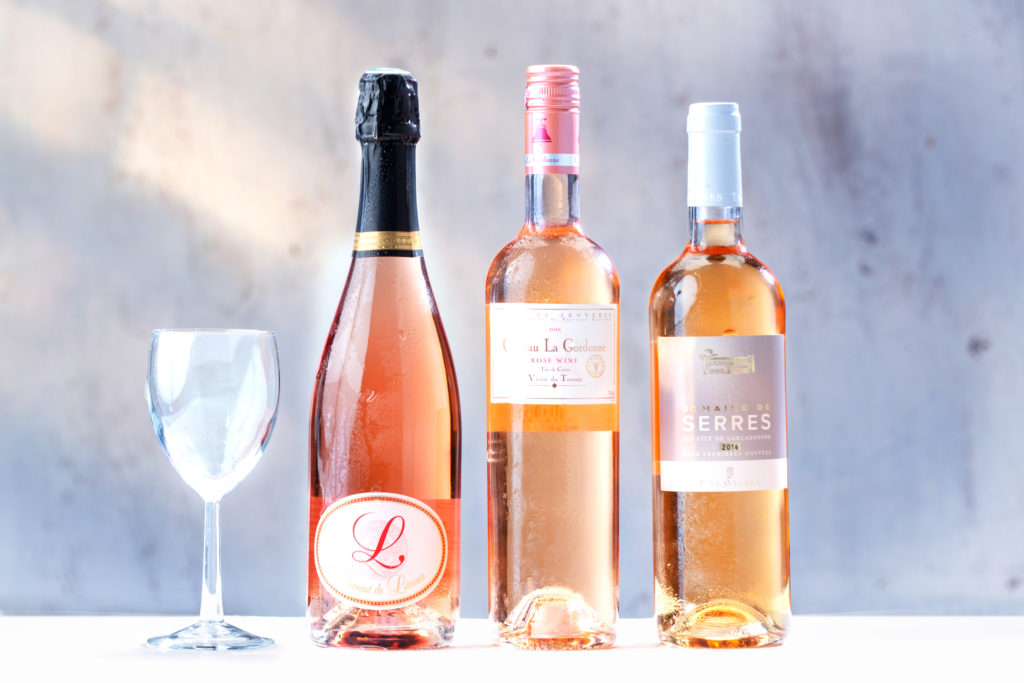As summer days stretch longer and hotter, you don’t have to look far to take note of a trend that’s popping up in wine glasses everywhere from poolside cabanas to sidewalk cafés— there’s something distinctly pink in that glass. Nielsen marketing statistics show that sales of rosé increased by 42 percent last year, and with good reason—this style of wine is outrageously refreshing, versatile and straight-up delicious. Stay tuned: You’re about to find out how this rosé tour de force came about and why this is one bandwagon that’s worth hailing and jumping aboard.

When I first started hosting wine tasting events several years ago, I heavily featured rosés in the hot summer months. Inevitably, as I would proffer up a cold glass of rosé to a passerby, there was always someone who would wrinkle their nose, shake their head and say “Ugh—I don’t like sweet wine.” Assuming the wine I was offering was sweet was a totally understandable assumption based upon how pink wine first made its way into the American consciousness; yes, I’m talking white zinfandel. White zinfandel was invented (actually by accident) in the early 1970s by Sutter Home’s Bob Trinchero. The story of this wine’s origin and rise is fascinating, but, long story short, by 1987, Sutter Home White Zinfandel was the best-selling premium wine in the United States. Fruity, sweet and relatively low in alcohol, it goes down nice and easy. An entire generation formed their opinion of pine wink on this little quaffer. Although this wine has very little in common flavor- and quality-wise with the dry rosés Europeans had been drinking for centuries, for better or for worse, it put rosé on our radar.
Fast-forward to today, and gorgeous rosés of every hue and from all corners of the globe are available. The differences in color and body of rosé come from how it’s made: Traditionally, rosé is made by lightly crushing red grapes and leaving them to swim around (macerate) with the red skins for a period of time determined by the winemaker. The longer the skins hang out with the wine, the darker (redder/rosier), deeper and more tannic the finished wine will be. Some winemakers only leave the skins on for a few hours, creating a wine that’s light in body and the palest blush pink. Other rosés sit with their skins for several days, giving us a wine that almost drinks like a light red, with lots of the qualities you usually find in red wines, like bigger body and higher tannins.
So with this tremendous selection available, how in the world do you choose? Well, let me do you a favor and answer that with one word: France. Although incredibly good rosés hail from all over the planet, France is the motherland of rosé, and it’s definitely where you should start what is sure to be your lifelong love affair with this wine.
Rosé from the wine region of Provence in the south of France is widely reputed to be the best in the world. Traveling along the French Mediterranean in the summertime, it seems that the French are drinking rosé instead of water—it’s absolutely everywhere. The majority of rosé from this region is made from blends of local grapes, including grenache, cinsault, mourvedre and syrah. These grapes come together to give us a mouthwatering alchemy of complex flavors—anything from red berries, to citrus and even dried herbs like thyme, rosemary and lavender. Try a rosé from the village of Bandol, where vines are growing so close to the sea that some have even been able to pick up on a hint of salinity in the wine. No wonder it goes so beautifully with the Mediterranean diet of crustaceans, fresh fish and light but rich tomato-based dishes.
However, not all great French rosés come from Provence. Head north into the region of the Rhône valley and you’ll encounter the village of Tavel, which is unique for this important reason: Tavel is the only communal appellation in France exclusively for rosé wines. The wines of this region tend to be richer and darker in hue than their southern counterparts and can stand up to heavier meats like roast pork and even duck. Travel west and you’ll encounter rosé made of cabernet franc—these wines are medium-bodied and have flavors that approach savory like hints of bell pepper, basil and mint. In Southwest France you’ll encounter something special—a sparkling rosé wine known as Cremant de Limoux. Although when many of us think bubbles, we automatically think Champagne, sparkling wine was actually invented by Benedictine monks in the village of Limoux in the mid 1500s. A stunning salmon-pink color, this sparkler has hints of raspberry, red currant and grapefruit.
With so much to discover in the world of rosé, it’s easy to become obsessed—you’ll be calling summer “rosé season” in no time. Cheers!






